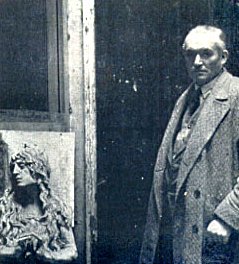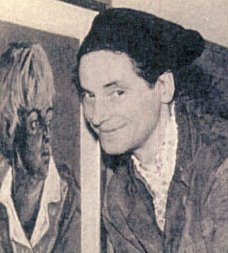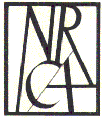| HOSTED BY |
A History of Art Forgery
| A Rogue's Gallery of Art Forgers |
Little is known of the identity of the hundreds of artists who created copies, pastiches, or other spurious artwork in the millenia preceding the nineteenth century. It was only after the discovery of modern scientific methods of forgery detection in the past hundred years that it was discovered that a huge part of what had been acepted as original antiquarian work was of questionable origin. Some of the more famous of this past century's art forgers, who were detected and identified in one way or another, are summarized here with examples of some of their most notorious work.
|
 ALCEO DOSSENA |
One of the greatest master forgers of all time was the Italian sculptor Alceo Dossena (1878-1936). Dossena did not deliberately set out to copy ancient works, but he was so adept at using the techniques of ancient Greek, medieval, and Renaissance sculptors that many of his works were bought up by numerous collectors and curators who were convinced that they were authentic antiquities. Two of his relief sculptures, both entitled Virgin and Child, are in the Victoria and Albert Museum in London, in a separate gallery reserved for museum-quality forgeries. |
 |
 |
ABOVE LEFT: Madonna by Dossena - a wood carving based on the work of Simone Martini. Experts questioned the work on the basis of both the pose and the drapery on the figure. ABOVE RIGHT: Four of the sculptural works of the forger Alceo Dossena, which show his incredible capacity for copying any style, from Greek to Etruscan, from Sienese to that of Donatello. Arnau, Frank. The Art of The Faker – 3,000 years of Deception. Boston, Little Brown & Company, 1959. LCCN: 61-5317. |
 LOTHAR MALSKAT |
Lothar Malskat was a restorer who was commissioned to work on deteriorating Medieval frescoes in two European cathedrals. Instead of restoring the existing works, he found it easier to simply whitewash over the existing paintings and repaint completely new works on the walls. The project was carried out under the utmost secrecy, and managed to defy detection by the most notable art experts and government officials for years. State-wide celebrations were held in his honor, and his fraud was only discovered after it was noticed that he had incorporated certain historical inconsistencies into his newly created “Medieval” works. These included an image of a turkey, a fowl which had not been introduced into Europe until much later in history, and images of both his sister and of a contemporary film actress into his compositions. |
 |
 |
ABOVE LEFT: View of the celestial loft of the cathedral where Malskatt painted his forgeries of Medieval religious figures. ABOVE RIGHT: Prior to their being revealed as fakes, Malskat’s
forged “restorations” at Lübeck were revered by
luminaries of the State and the art world alike. Among the dignitaries
present at the Seven-hundredth Anniversary celebrations of the
founding of the Marienkirche of Lübeck are the Federal
Chancellor, Dr. Konrad Adenauer, on the right, with Lothar Malskat.
Left center are Minister President Lübke and Waldemar Krupt. |
 |
 |
ABOVE LEFT: The anachronistic turkey that Malskatt incorporated into his supposedly “Medieval” frescoes. The bird hadn't been introduced into Europe until much later in history. ABOVE RIGHT: Head from the Schleswig Cathedral frescoes by Lothar Malskat modelled on his sister, Frieda. Nobody questioned her rather modern hat. Savage, George. Forgeries, Fakes and Reproductions. London, Barrie & Rockliff, 1963; Schuller, Sepp. Forgers, Dealers, Experts — Strange Characters in the History of Art. New York: G.P. Putnam’s Sons 1960. |
 |
 |
 |
| ABOVE LEFT: The scene in court in October 1954 when forged
easel-paintings by Malskat were first discussed publicly. The
picture in the foreground appears to be a forgery of the work
of Marc Chagall.
ABOVE CENTER: Forged paintings by Malskat. Nude in the style of Toulouse-Lautrec, and another painting in the style of Chagall. These were both exhibited in Essen as examples of his forgeries. ABOVE RIGHT: Lothar Malskat painted decorations for the Tre
Kronor Inn, Stockholm. After his release from prison, Malskat
arranged an exhibition of his paintings in a number of towns in
North Germany to show his merits as an artist. He calls his style,
which he used as a “restorer” of North German Gothic
paintings, “Impressionist - Expressionist”. Schuller, Sepp. Forgers, Dealers, Experts – Strange Chapters in the History of Art. New York: G.P. Putnam’s Sons 1960. LCC 60-13452. |
| Intro (1) (2) (3) (4) (5) (6) (7) (8) (9) (10) (11) (12) (13) (14) (15) (16) (17) (18) (19) (20) Look for updates to this exhibit every week. Also visit the companion to this exhibit: FABULOUS FAKES |
| Special thanks to people without whom this exhibition would not have been possible: Thea Eichler, NRCA; Billie Tucker, New Rochelle Library; Ivar Hyden, Backstreet Gallery and all the contributing artists. |
| Additional information about the availability of Fabulous Fakes, the History of Art Forgery or any of the works in the exhibition may be obtained by contacting The New Rochelle Council on The Arts by email or by calling 212-529-2025. More information on the NRCA can be found by connecting to the internet and clicking here. |
 Fabulous Fakes and A History of Art Forgery © J. L. Dolice, 2001, 2003.
|
| All images in this presentation may not be copied, stored in any electronic retrieval device or used in any way without permission in writing. ISBN 0-935901-51-5. |
| Art Forgery | Art Haus |